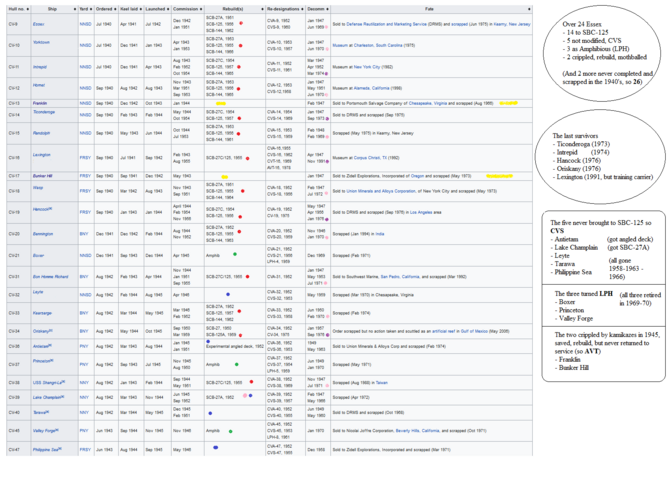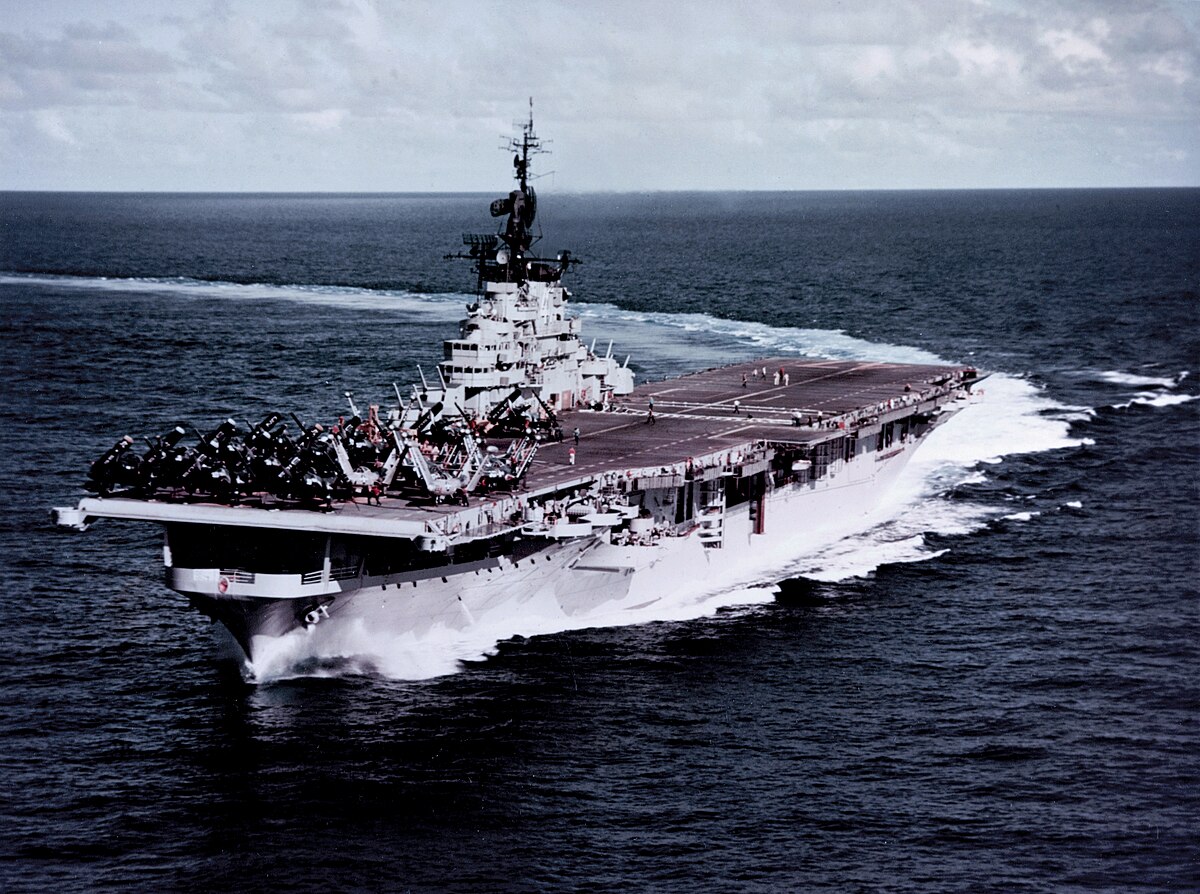In the spring of 1953, and assuming the Banshee and S2F aircraft would be the RCN choice, the USN proposed the loan of an Essex Class carrier to the RCN for $1 per year. The pro British Light Fleet advocates rejected this apparently due to the fact that the ship would require a larger crew and major changes to the existing catapult. The fact that it was the USN view that a ship the size of the proposed Powerful Class could not operate efficiently and economically in the North Atlantic did not appear to have been a consideration.
.....
Before departing in June 1953 a detailed Memorandum by Commodore Keighly-Peach was prepared which proposed major changes to the RCN Five Year Fleet Plan from 1961-1965. He roundly criticized the one carrier force with 43 escorts, and stated, "This fleet composition was arrived at without sufficient attention being paid to present and near future technical advances vitally affecting naval warfare." He noted RCN Aviation has remained virtually static in numbers of operational aircraft over the past decade in spite of the fact that the emphasis on aircraft in maritime warfare has greatly increased. During the same period, the RCN surface fleet has more than doubled.
He proposed shifting the concentration upon a sizeable fleet of Destroyer Escorts and Patrol Frigates by transferring existing or planned manpower and financial resources to a balanced force of two hunter killer groups built around one Essex Class carrier, the proposed Light Fleet carrier and 25 Destroyer Escorts. This would place the emphasis upon flexibility encompassing ASW capability, support of ground forces, offensive air operations against enemy land targets and enemy naval forces, and providing air defense of shipping. Keighly-Peach also noted that a fully supported proposal and justification for a second carrier had never been made. But if successful, by 1965 it would ensure the RCN an effective capability to participate in limited wars and in the peacekeeping role.
.....
Keighly-Peach's report appears to have been virtually ignored, suggesting senior RCN officers were obviously quite content to live with the imbalance and lack of flexibility inherent in a navy composed almost entirely of small ships and capable of only a limited role.
.....
In December 1955 the Deputy Minister directed that a critical review be conducted of RCN Aviation due to his concern about the considerable number of units (squadrons) and aircraft in use to support the two front line aircraft squadrons assigned for Bonaventure.
The review, recognizing that RCAF reserve squadrons were being disbanded, also proposed the disbandment of the reserve navy air squadrons. However, the Committee came up with a greatly different series of conclusions and recommendations and in a Top Secret report stated:
In the Eastlant role, Bonaventure would require an AEWcapability, fighter air defense and an ASW squadron. The carrier was too small to perform these functions.
Conclusions:
Bonaventure could carry only a mix of ASW aircraft consisting of fixed wing and helicopters and was therefore inadequate for the assigned role.
Recommendations:
The ASW group (hunter killer) should comprise two Light Fleet Class carriers which combined could provide AEW aircraft, fighters and ASW aircraft (helicopter and fixed-wing), or
A single carrier e.g. (USN Essex Class) be procured, which could fulfill the need for the required AEW, air defense of the fleet and the ASW role.
Observations:
Current naval plans failed to reflect the growing importance of the power of naval aviation in maritime warfare;
Operational Research Studies established that under certain circumstances two CS2F aircraft are more effective than a St. Laurent Class escort;
Developments lead to the conclusion that a more effective navy could be achieved if a better balance of air to surface units was contemplated;
A serious imbalance of forces exists in the RCN insofar as the surface forces have steadily increased in personnel and ships, whereas Naval Aviation, even though rearming with new aircraft, had not grown proportionally;
Helicopter platforms for escorts were proposed to augment the range of carrier-based ASW helicopters and have an independent increased search capability.
The reference to the carrier limitations, although disturbing news to some, confirmed exactly what the USN had earlier stated. Now four months before the commissioning of Bonaventure, it was now officially established that the ship was incapable of meeting its assigned role. Air defense of the fleet was virtually impossible without severe degradation of either the ASW or AEW capability.
As far as can be determined, the report prepared by non-aviators and remarkably similar to the one previously proposed by Keighly-Peach, was never discussed by Naval Board.


